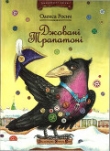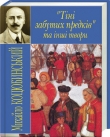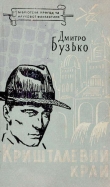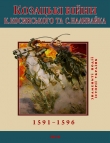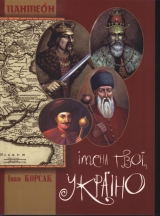
Текст книги "Імена твої, Україно"
Автор книги: Иван Корсак
Жанр:
Рассказ
сообщить о нарушении
Текущая страница: 17 (всего у книги 21 страниц)
Авторське право © Український тижневик, 2 травня, 1999, No. 18, том. LXVII.
[67] http://findarticles.com/p/articles/mi_qa3686/is_200012/ai_n8911475/pg_3
«The Cossacks also engineered the restoration of an Orthodox hierarchy in 1620 (pp.
332-41). The king ordered the bishops arrested, but the Cossacks were able to prevent this
by delivering the state from near-certain death at the hands of the Turks. A large Turkish
invasion threatened to overwhelm the Commonwealth in 1621, but the Cossacks joined
247
the Polish forces at the last minute and fought valiantly at the Battle of Khotyn, less to save
Poland-Lithuania than to protect their Orthodox bishops».
History of Ukraine Rus’, Volume Seven: The Cossack Age to 1625.
Canadian Journal of History, Dec 2000 by John-Paul Himka
[67] «Козаки також домоглися відновлення православної ієрархії 1620 року
(с. 332–41). Король наказав арештувати архієпископів, але козаки змогли завадити
цьому, рятуючи державу від безперечної смерті, яку могли заподіяти турки.
Велике вторгнення турків становило загрозу повалення Королівства 1621 року, але
козаки приєдналися до польських військ в останню хвилину і хоробро воювали
під Хотином, не стільки для того, щоб врятувати Польщу, як заради православних
єпископів».
Гімка Джон Пол Історія України-Русі, том 7, період козаків до 1625 р. //
Канадський iсторичний журнал. – 2000. – Грудень.
[68] http://www.xenophon-mil.org/milhist/modern/cossacks.htm
«Thus, unless the Cossacks could outnumber and surprise their enemy, they were
largely ineffectual in the assault. Even the famed Cossack counterattack at the Battle of
Khotyn in 1621 only succeeded with the achievement of tactical surprise over exhausted
Turkish troops».
By STEVEN STINEMETZ. THE COSSACK MILITARY SYSTEM AS DESCRIBED
BY THE SIEUR DE BEAUPLAN.
[68] «Таким чином, хоча козаки й могли перевищувати кількісно та дивувати
ворога, вони були дуже неефективними в нападах. Навіть відома козацька контратака
в битві під Хотином 1621 року мала успіх лише тому, що козаки застосували стосовно
виснажених турків тактику несподіванки».
Стінемец Стівен, «Козацька військова система така, якою її описав Сер де
Боплан».
[69] http://www.nybooks.com/articles/2686
ARE HETMEN HEROES? By Frank E. Sysyn, Reply by Abraham Brumberg
In response to Not So Free At Last (October 22, 1992)
To the Editors:
«I think in his zeal to debunk, Mr. Brumberg has gone too far. He does not consider
that in the sixteenth to mid-eighteenth centuries much of the Ukrainian territory was a
land in which the harsh conditions of East European serfdom had difficulty taking hold.
Contrary to his assertion, Cossack led revolts and the formation of the Cossack polities
did retard introduction of serfdom, not least because a large part of the population took
on Cossack status. Mr. Brumberg also ignores the ways in which the Cossacks did play
a positive role in the national-religious life of Ukraine. In the early 1620s, Hetman Petro
Konashevych– Sahaidachny founded a chair at the Orthodox Brotherhood School in Lviv
and protected the consecration of a new Orthodox hierarchy by the Patriarch of Jerusalem.
The intermixing of Orthodox religious and Ruthenian-Ukrainian national traditions on
the borderland of Western and Eastern Christianity makes it difficult to divide religious
248248
from national factors, but this should not surprise, since it remains an aspect of Eastern
European life to this day».
Frank E. Sysyn Acting Director Canadian Institute of Ukrainian Studies University
of Alberta Edmonton, Canada
[69] Сисин Франк Е., «Чи є гетьмани героями?»
У відповідь на «Нарешті не бачити» (22 жовтня 1992 р.) Абрагама
Брумберга
До видавців:
«Я думаю, що в своїх пориваннях викрити Брумберг зайшов надто далеко. Він
не бере до уваги того, що починаючи з XVІ й до середини XVІІІ століття велика
частина території України була землею, де жорсткі умови східноєвропейського
кріпацтва приживалися важко. На противагу його твердженню, козаки вели
повстання, а формування козацьких загонів таки сповільнювало поширення
кріпацтва не найменшою мірою тому, що велика частина населення прийняла
статус козацтва. Містер Брумберг також ігнорує те, яким чином козаки відігравали
позитивну роль в національно-релігійному житті України. У 1620-х роках гетьман
Петро Конашевич-Сагайдачний створив кафедру в Православній Братській школі
у Львові та захищав освячення нової православної ієрархії Єрусалимським
патріархом. Змішування православних релігійних та русько-українських
національних традицій на прикордонній землі східного та західного християнства
ускладнює поділ на релігійні та національні фактори, але це не має дивувати, адже
таким є аспект європейського життя і на сьогодні».
Виконувач обов’язків директора:
Канадський інститут українських досліджень
Університет Альберти
Едмонтон, Канада
[70] «By then, the Poles had barely been holding their own, thanks to well-prepared
trenches and a series of spoiling forays by their infantry and 8,000 husaria, or heavily
armored shock cavalry. During one determined assault, the Turks managed to break
through the Polish defenses, only to be driven from the fortress by a counterattack by
Chodkeiwicz at the head of three regiments of husaria and one of light cavalry. In that
critical fight, the aged, ailing Chodkiewicz had to transfer command to his lieutenant,
Stanislaw Lubomirski. He died soon after, on September 24».
[70] До того часу Поляки ледве трималися завдяки добре підготовленим ровам
та грабіжницьким набігам піхоти та восьмитисячної гусарії, або добре озброєної
ударної кавалерії. Протягом однієї спрямованої атаки турки змогли пробитися через
оборону поляків».
[71] http://www.savage-comedy.com/_Petro_Konashevych,
In 1646, John III Sobieski, a monarch of the Polish-Lithuanian Commonwealth,
had said the following about Sahaidachny:
«He was a man of great spirit who sought danger, did not care about his own life,
249
was swift and energetic in battle, cautious, slept little and was sober… was careful at
discussions, and non-talkative in conversations».
[71] 1646 р. Джон ІІІ Собєскі, монарх Польсько-литовського Обєднання,
сказав про Сагайдачного таке:
«Це була людина великого духу, він шукав небезпеку, байдуже ставився до
власного життя, був швидким та енергійним у битві, обережним, мало спав та був
розсудливим… був обережним у дискусіях та неговірким в розмовах».
250250
І ЗРАДНИКИ, І КАР’ЄРИСТИ, І ЄРЕТИКИ…
Новели про І. Богуна та розгром Росії І. Виговським під Конотопом мають спільні
посилання на зарубіжних авторів, бо ж одна все-таки епоха. Кинемо іронічним
поглядом на бачення Конотопської битви в «Короткій історії Туреччини», звернемо
увагу на те, що Виговський, Немирич та ін. виступають винятково як польські
або ж литовські феодали. А ще вони разом з І. Богуном, так само як І. Мазепа,
постають на чужих сторінках нерідко то російськими, то польськими то ще чиїмись
зрадниками. Насправді ж польський король достеменно знав І.Богуна, причому на
власних від нього поразках, як високоталановитого і авторитетного полководця, то
ж звільняв його з неприступної кам’яниці не з якихось альтруїстичних міркувань
чи навіть на прохання українського гетьмана, а в надії на діяльну участь у війні з
Росією. Богун, своєю чергою, воюючи проти московитів, підтримував зносини з
українським людом, бо йому те боліло найперш, за що й суджений як «зрадник» і
розстріляний під Новгород-Сіверським.
А про Юрія Немирича чого тільки не начитаєшся… Один з найосвіченіших
державних діячів тогочасної Європи, за плечима в якого університети Лейдена,
Амстердама, Оксфорда, Кембриджа та Парижа, Немирич багато разів обирався
в парламент і був одним з головних авторів підписаної у Гадячі знаменитої
угоди. Хтозна, якби її дотрималися, то зовсім інший дух запанував би на всіх
східноєвропейських землях у те скаженне середньовіччя, сповнене невситимої
жадоби, владолюбства та невимірних амбіцій. Юрій Немирич з його тернистими
дорогами до України і Божого Храму, віриться, ще знайде достойного його рівня
романіста. Бо й кар’єрист Юрій Немирич, і поганої про нього думки російська та
польська історіографія, та й взагалі він єретик та безбожник. А той «безбожник»,
воюючи за справжні українські інтереси, отримує в груди сімдесят (!) ран і помирає
з вигуком «Ісусе, спаси мене»…
Зрозуміло, тривала бездержавність України не могла не позначитися на
історіографії – хто ж чужий міг захистити наші імена?
Час поступово все розставляє на місця. Вже в епоху дисиденства такі постаті,
як Ю. Немирич, починають бачитися в обох країнах істинними прибічниками
українсько-польської співпраці. Наближення до істини триває, солідний
«Польський біографічний словник» в двадцять другому томі на сторінці 816 поряд
з оповіддю про думку опонентів говорить про дослідників, які розглядають Юрія
Немирича як вісника сучасних концепцій, «які завжди на перше місце ставили
інтереси його української батьківщини».
[72] «On April 1 1657, Karl X Gustav joined Rakoczi and the Ukrainian Cossaks
in the village of Cmielow, not far from the the former Arian centre Rаkow. Rakoczi
led an army of 24,000 Transylvanians. Generals Ferenc Ispan, Peter Huszar and Janos
Kemeny headed the divisions. Colonels Anton Zhdanovich and Ivan Fedorovich Bohun
comancolonelded the Ukrainian corps of 6,000 Cossac cavalry».
«At last, on October 6 1657, in Korsun, an agreement between Sweeden and
the Cossac was signed. Of the three Ukrainian comissars who signed this treaty, two
251
commanders, Niemirycz and Bohun, headed the pro-sweedish party and had personal
certificates as evidence of their services to Sweden during the siege of Brest».
Andrej Kotljarchuk, In the shadows of Poland and Russia: The Grand Duchy of
Lithuania and Sweeden in the European crisis of the mid– 17th century, Stockholm,
2006.
[72] «1 квітня 1657 року Карл Густав Х приєднався до Ракоці та українських
козаків у селі Смєлов, неподалік колишнього арійського центру Раков. Ракоці
керував армією з 24 000 трансильванців. Генерали Ференк Іспан, Петер Гужар, та
Янос Кемельни керували дивізіями. Полковники Антон Жданович та Іван Федорович
Богун керували українським військом, що складалося із 6 000 козацької кавалерії».
«Нарешті 6 жовтня 1657 р. в Корсуні було підписано угоду між шведами
та козаками. Серед трьох українських комісарів, що підписали угоду, були два
командири, Немирич та Богун. Вони очолювали прошведську сторону та мали
особисті свідоцтва як доказ їхньої служби Швеції під час облоги Бреста».
Котлярчук Андрій. В тінях Польші та Росiї: Велике Литовське Королівство
та Швеція в Європейській кризі середини 17 століття. – Стокгольм, 2006.
[73] http://www25.uua.org/uuhs/duub/articles/jerzyniemirycz2.html
JERZY NIEMIRYCZ
Polish-Lithuanian Soldiers
Jerzy (George) Niemirycz (1612–1659) was an ambitious Arian nobleman and
statesman in the Polish-Lithuanian Commonwealth. During his later life the Commonwealth,
which included the Ukraine, was nearly destroyed by Cossack revolt and Russian
and Swedish invasion (a disastrous period in Polish history known as «The Deluge»).
Niemirycz struggled in vain to protect religious liberties within the Commonwealth and
to prevent the loss of the Ukraine to Russia. He designed a new Polish union that he
hoped might withstand pressure from surrounding states. Because he changed national
allegiances several times to further his goals and, in his last year, changed his religious
faith for political advantage, he has an equivocal reputation in both Polish and Unitarian
history. He is probably the most influential Unitarian in Polish history.
Jerzy was the eldest son of Stefan Niemirycz (d.1630) and Maria Wojnarowska
(d.1632), devout Arian nobles living in the southeast region of Poland (now Ukraine). After
receiving home tutoring he was enrolled at the Arian Academy of Rakуw (Racovia). Such
was his talent for mathematics that one of his tutors, Joachim Stegmann, encouraged him
to pursue it further. As the eldest son of a nobleman, however, his future lay in politics.
After completing his studies at the Rakуw Academy, in 1630 he left with a group
of Arian nobles to be educated in Western Europe. He first studied at the University of
Leiden in the Netherlands. There he met Krzysztof Arciszewski, a fellow Pole employed
as a Dutch commander of the West India Company. Arciszewski had grown up Arian
but had joined the Reformed Church in the Netherlands, reserving the right to his own
opinion on the doctrine of the Trinity. He tried unsuccessfully to persuade Niemirycz and
252252
other Poles to start an Arian colony in Brazil. Niemirycz toured in France, England, Italy
and Switzerland, 1632-33, before returning to Leiden. During his stay abroad he showed
a keen interest in global politics, as evidenced by his Discursus de bello Moscovitico
(Discourse on the Muscovite War), 1632, dedicated to his uncle Roman Hojski. In this he
described the geopolitical situation of the current Polish-Muscovy War, 1632-34, fought
over possession of the Russian city of Smolensk.
On his return to Poland in 1634, Niemirycz fought in the victorious campaigns against
the Russians and, in 1635, against the Swedes, whose military power had been eroded by
the Thirty Years’ War. Favorable treaties having been signed with Russia and Sweden, the
Polish-Lithuanian Commonwealth entered a short period of peace and prosperity.
With a political career in mind, Niemirycz started to look for a wife. He considered
marriage to a Roman Catholic, but in 1635/36, to the delight of Polish Brethren officials,
he married the Calvinist Elzbieta Slupecka, who gave him valuable family connections to
Protestant magnate families such as the Leszczynskis, Firleys and Potockis. In 1636 the
Kijуw nobility elected him a deputy judge to the Polish Supreme Court (Trybunal Koronny)
in Lublin, where he presided over an Arian-Roman Catholic theological disputation
between Krzysztof Lubieniecki and the Jesuit Kasper Druzbicki. His performance as judge
must have pleased the nobility, for in 1637 they elected him member of parliament from
that region, a post to which they returned him for many years.
During the first decade of his political career Niemirycz concentrated on defending
the Polish Brethren from growing Catholic intolerance. In 1638 he tried in vain to stop
Parliamentary proceedings against the Rakуw Academy. When it was ordered closed he
signed a legal protest against the judgment. He was also one of the petitioners of the 1638
Kisielin gathering which wrote to the Calvinist duke Krzysztof II Radziwill, requesting aid
and protection for the Polish Brethren.
Polish-Lithuanian Territory in 1648
Niemirycz maintained the Arian church in Czernichуw founded by his father and
grandmother, where the ministers were Piotr Stoinski (1610-1649) and Jerzy Ciachowski
(1652-1661/62). He also established and supported an Arian church in Uszomir, where he
founded a school and put the Dutch refugee Izaac Volger in charge. In 1643, after acquiring
extensive lands south of Kyiv on the eastern bank of the Dnieper River, he installed Andrzej
Wiszowaty as minister there, that he «might preach the Gospel to Scythians and other
peoples, following Saint Andrew». Niemirycz employed many Unitarians, encouraged
them to settle on his estates, and recommended them to other magnates, including tolerant
Roman Catholics. His wealth allowed him to become a patron of the denomination.
Numerous books and tracts were dedicated to him. He also enjoyed holding theological
disputations among Arians, Catholics, and even the Orthodox.
In the late 1630s and 1640s Niemirycz enhanced his family fortune, which had the effect
of supporting the Polish Brethren. He managed all of the family estates until 1648 when
his brothers received their portions. Jerzy chose Horoszki as his seat. Through acquisitions
and donations his possessions grew to include 14 cities and 50 villages with 7600 serfs. By
1648 he ruled the second largest domain in the Ukraine. The ways in which he acquired
new estates were not always peaceful and legal. For example, in 1640, following the death
of his aunt Aleksandra Hojska, he and his brothers raided and pillaged Hoszcza, at the same
time reintroducing the Arians expelled from that city earlier. In the next years he attacked
the estates of his cousins; in 1650 he was raided in turn by his own brother.
253
Despite being chosen as a member for nearly every parliament held, Niemirycz’s
political fortunes did not prosper. In 1641, when he was chosen chamberlain of Kyiv
(podkomorzy kijowski), his Roman Catholic friend and protector Stanislaw Koniecpolski
said that he might have been nominated to the Senate «if his faith did not stand in the way».
On this occasion, in his Arian pride, Niemirycz went too far. When about to be installed
as chamberlain, he was asked if he was ready to swear by the Trinity. He replied that he
would swear not only by a Holy Three, but also, if needed, by Four. This witticism led to
a lawsuit for blasphemy that dragged on for years before it was quashed in 1645 by his
relative, Andrzej Leszczynski, and the Roman Catholic bishop of Kijуw. This episode did
not endear Niemirycz to the Roman Catholic nobility. In 1646 the Supreme Court ordered
him to close down all the Arian churches in his estates, to expel his fellow Brethren, and to
pay a fine of 10,000 zlotys. Like other Arians, he ignored the ruling.
Niemirycz fled his estates in the Ukraine and attended the Diet in Warsaw. King
Wladyslaw (Ladislas) IV Vasa had died and the nobles met to choose a successor. Niemirycz
and his Protestant allies campaigned for the Calvinist Sigismund of Transylvania, whom
they hoped would grant religious toleration. Initially refused admittance to the Diet because
he denied the Trinity, Niemirycz was let in after he claimed that he came to talk politics
and not religion. Although not given permission to speak in the drafting of the articles of
confederation, he was nominated to a council to aid the regent. After an ex-Jesuit cardinal
was crowned King Jan II Kazimierz Vasa (John Casimir), Niemirycz began seeking favor
and protection at the Transylvanian court. He took part in warfare against the Cossacks,
but advised moderation and tried to explore settlement with them.
Niemirycz returned to his estates in the Ukraine in 1649, but after the Cossacks
defeated the Polish army at Batik in 1652, he was forced to resettle in Wolyn (Volhynia).
He became disillusioned with the new Polish king, who in 1654 failed to prevent the loss
of the Ukraine to Russia. Thus, in 1655, when the Swedes invaded Poland, Niemirycz
threw himself wholeheartedly into the Swedish camp. He led the delegation that petitioned
Swedish king Charles X to restore civic and religious liberties to Polish Protestants,
including the Polish Brethren. While the king expressed sympathy, he declined to officially
endorse toleration for fear of offending the majority Catholic population. This did not
dampen Niemirycz’s pro-Swedish enthusiasm. He served in the Swedish army and wrote
letters to dignitaries urging them to submit to the Swedish King. These letters, widely
circulated in Poland, not only harmed Niemirycz’s reputation, but also incited resentment
and retaliation against the Polish Brethren. Catholic resistance to the Swedes made an
especial target of Arian nobles and congregations, whose populations were decimated and
scattered. The embattled King Jan II Kazimierz, rallying popular support, vowed to banish
the Arians from the Commonwealth. In 1657 Niemirycz, hoping to restore his fortunes and
perhaps those of the Brethren, negotiated a treaty to partition Poland among the Cossacks
under Chmielnicki, Sweden, and Transylvania. This was regarded as plain treason.
When the Swedish invasion receded, Niemirycz returned to his estates in the Ukraine,
which had been restored to him by Khmelnytsky, and sided there with a Cossack faction
opposed to Moscow. He worked tirelessly to design and promote the Union of Hadziacz,
1658. Under the terms of this treaty, the Commonwealth of Poland and Lithuania was to
be joined by a third entity, the proposed Duchy of Ruthenia (Ukraine and Volhynia). They
would have in common a king, a parliament, and a foreign policy. The Duchy would retain
its own treasury, courts, and system of education. Its lay senators and Orthodox clergy
would sit in the Polish Senate. The Uniate Church (which put Orthodox believers under
254254
the Roman Catholic hierarchy) would be dissolved. In the new duchy, freedom of religion
was explicitly granted only to the Orthodox and Catholics.
Since Niemirycz intended to be the grand chancellor of the new duchy and the
position of the Arian community in the Commonwealth was no longer tenable, he
officially converted to Orthodoxy that year. In a tract (Skrypt), Exhortation to all
Dissidents from the Romish Religion to Take Refuge in the Bosom of the Greek Church,
he entreated the Polish Brethren and other Protestants to convert to Orthodoxy. This,
he claimed, was the truly apostolic church, whose dogmas are based on the Scripture.
He rejected the idea that faith can be based on reason alone, pointing out the internal
discords among Polish Arians. He stressed the advantages of belonging to a larger
church body. Although no copy of Skrypt survives, its content is preserved in the Latin
Responsio ad scriptum (Answer to the Skrypt) of Samuel Przypkowski. Niemirycz’s
conversion shocked the Polish Brethren. None of them followed his lead; most were
utterly appalled by it. The conversion was treated with universal skepticism: the
papal nuncio said sardonically that for a cardinal’s hat Niemirycz would have become
a Catholic. Since he did not close the Arian churches on his estates, the Russians
considered Niemirycz a secret Unitarian.
In 1659 Niemirycz made a famous speech before the Polish Diet in support of the
Hadziacz Union, which the Diet reluctantly ratified. With the prospect of a new and
glorious career ahead of him, he returned to his Ukrainian estates, where he tried to
crush the Cossacks allied with Moscow. After an initial military success, he was defeated
and killed while trying to flee. Reportedly he received over 70 stab wounds in the chest
and, just before dying, cried out «Lord Jesus, save me now!» His death exposed a nearly
universal hatred of him. At the news Orthodox, Catholics, and Arians all expressed joy.
Katarzyna Lubieniecka, mother of the theologian Stanislaw, who might have known
Niemirycz personally, wrote, not without some satisfaction, «The Lord has made quick
justice through a peasant’s hand… It did not help him, though be became Ruthenian».
The provisions of the Hadziacz Union, of which he was the principal architect, were
never implemented, and Ukraine was eventually divided by Poland and Russia.
Niemirycz’s negative reputation remained unchanged for three centuries. When the
Soviet Union subjugated Poland and Ukraine in the second half of the 20th century, he was
rediscovered by Polish and Ukrainian dissidents, who portrayed him as an early proponent
of Polish-Ukrainian cooperation in response to the growing threat of Russia. To this day,
however, he remains a controversial figure. Perhaps because of his apostasy, his Arian
religious affiliation and protection of the Polish Brethren have been largely forgotten.
Jerzy Niemirycz and his wife, Lady Elzbieta Slupecka (d.1660), had three children.
Their son Thomas, while studying in Kisielin, broke his neck and died young. Their
daughter Barbara married an Arian nobleman and patron of the Czarkуw church, Hieronim
Gratus Moskorzowski (c.1627-c.1660). After his death, she remarried Marcjan Czaplic,
who in 1661 converted to Roman Catholicism in order to stay in Poland. It is not clear
if Barbara also converted. The second son, Teodor (1648-c.1700), after the death of his
parents, was brought up by his uncle as a Unitarian, and left Poland with him in 1664.
In 1668 he returned to Poland, and managed what was left of his devastated estates.
He was a favorite both of Jan II Kazimierz Vasa and the next king, Michal Korybut
Wisniowiecki. Like his father, Teodor was elected a member of parliament many times
but did not rise to high office. Upon his return to Poland he officially converted to
Orthodoxy. Nevertheless it was rumored that he and his cousin Marianna Niemiryczуwna
255
met to «exercise together in heresy». They were probably the last Arians in Volhynia.
Teodor died leaving two Roman Catholic daughters.
The family documents of the Niemirycz family were destroyed, along with their
house in Warsaw, in 1944.
Article by Kazimierz Bem
All material copyright Unitarian Universalist Historical Society (UUHS) 1999–
2007.
[73] ЮРІЙ НЕМИРИЧ
Юрій (Джордж) Немирич (1612–1659) був амбітним аріанським дво ряни ном
та державним діячем в Польсько-Литовському королівстві. (Аріани – прихильники
ранньої християнської течії, які стверджували, що Христос, Син Божий, нижчий
за Бога Отця; течія практично повністю зникла в середньовіччя. – І. К.). Протягом
його пізнішого життя королівство, в яке входила і Україна, було майже знищене
козацьким повстанням і російськими та шведськими набігами (катастрофічний
період в історії Польщі, відомий під назвою «Потоп»). Немирич марно боровся,
захищаючи релігійні свободи в королівстві та прагнучи перешкодити загарбанню
України Росією. Він створив новий польський союз, який, згідно з його
сподіваннями, міг би протистояти тиску з боку межуючих держав. Через те, що він
задля досягнення мети кілька разів змінював національні васальні залежності, а в
свій останній рік поміняв віру на політичну вигоду, він має сумнівну репутацію як
у польській, так і в російській історії. Він є, напевне, найвпливовішим унітарином
в історії Польщі.
Юрій був найстаршим сином Стефана Немирича (пом. 1630 р.) та Марії
Войнаровської (пом. 1632 р.), набожної аріанської знаті, яка жила в південносхідному
регіоні Польщі (тепер Україна). Після отримання освіти на дому він вступив
до Аріанської Академії в Ракові. Мав такий талант до математики, що один з його
викладачів, Йоахім Стегман, заохотив Юрія до подальшого вдасконалення знань з
цього предмету. Однак, будучи найстаршим сином дворянина, він мав майбутнє,
пов’язане з політикою.
1630 року, по закінченні навчання в Раківській Академії, він поїхав з групою
аріанських дворян здобувати освіту в Західній Європі. Спочатку навчався в
Лейденському університеті в Нідерландах. Там познайомився з Кшиштофом
Арціжевські, поляком, якого найняли як данського керівника Західно-Індійської
Компанії. Арціжевські, який виріс аріанцем, але пізніше приєднався до
Реформаторської церкви в Нідерландах, відстоював право на власну думку щодо
доктрини Трійці. Він безуспішно намагався переконати Немирича та інших поляків
започаткувати аріанську колонію в Бразилії. У 1632–34 рр., перед тим як повернутися
до Лейдена, Немирич обїздив Францію, Англію, Італію та Швейцарію. Протягом
свого перебування за кордоном він проявив неабиякий інтерес до глобальної
політики, доказом цього є його «Дискурс про війну московитів», написаний 1632 року
та присвячений його дядькові Романові Гойському. У цій роботі він описав
геополітичну ситуацію польсько-московської війни 1632–34 рр., метою якої було
завоювання російського міста Смоленська.
Після повернення до Польщі 1634 року Немирич брав участь у звитяжних
кампаніях проти росіян та 1635 року – проти шведів, військова влада яких була
256256
послаблена Тридцятирічною війною. Із Росією та Швецією були укладені вигідні
договори, Польсько-Литовське королівство увійшло в короткий період миру та
процвітання.
З політичною кар’єрою на думці Немирич почав шукати дружину. Він думав
про одруження з римо-католичкою, але в 1635-36 роках, на радість службовців
Польського братства, він одружився з кальвіністкою Ельжбетою Слупецькою, яка
дала йому цінні сімейні зв’язки з сім’ями протестантських магнатів Лежинських,
Фірлеїв та Потоцьких. 1636 року київська знать обрала його на посаду помічника
судді польського Верховного Суду (Trybunal Koronny) в Любліні, де Немирич
головував над аріансько-римо-католицьким теологічним диспутом між Кшиштофом
Любінєцьким та єзуїтом Каспером Дружбицьким. Напевне, знаті сподобалося те, як
він виконує обовязки судді, адже 1637 року вони обрали його членом парламенту з
того регіону, на посаду, до якої вони його повертали протягом багатьох років.
Протягом першого десятиліття політичної кар’єри Немирич концентрувався на
захисті Польського братства від католицької нетерпимості, що наростала. 1638 року
він марно намагався зупинити позов парламенту проти Раківської Академії. Коли
судовий процес було завершено, він підписав легельний протест проти рішення.
Немирич також був одним із подавачів петиції зібрання Кісєліна 1638 року, що їх
написали кальвіністському герцогу Кшиштофу ІІ Радзивілу, просячи про допомогу
та захист для Польського братства.
Немирич підтримував аріанську церкву в Черничеві, яка була заснована його
батьком та бабусею і де священиками були Пйотр Стоїнський (1610–1649) та Єжи
Цяховский (1652–1661/62). Він також встановив та підтримував арійську церкву
в Ужомирі, де заснував школу та призначив відповідальним за неї данського
біженця Ісака Фольгера. 1643 року, після того як отримав великі землі на південь
від Києва на східному боці річки Дніпро, він дав постанову, що священник Анджей
Віжовати може проповідувати Євангеліє скіфам та іншим народам, що слідують
за Св. Андрієм». Немирич найняв багато унітаріанців, заохотив їх оселитися на
його помістях та рекомендував їх іншим магнатам, включаючи толерантних римокатоликів.
Багатство дозволило йому бути керівником класу. Йому були присвячені
численні книги та трактати. Йому також подобалося вести теологічні диспути між
аріанцями, католиками та навіть православними.
В пізніх 1630–40 рр. Немирич збільшив багатство власної сім’ї, що мала вплив
на Польське братство і підтримувала його. Він керував усіма сімейними помістями
до 1648 року, коли його брати отримали свої частки. За основну садибу Юрій обрав
Горожкі. Шляхом придбань та подарунків його власність зросла до 14 міст та 50 сіл

